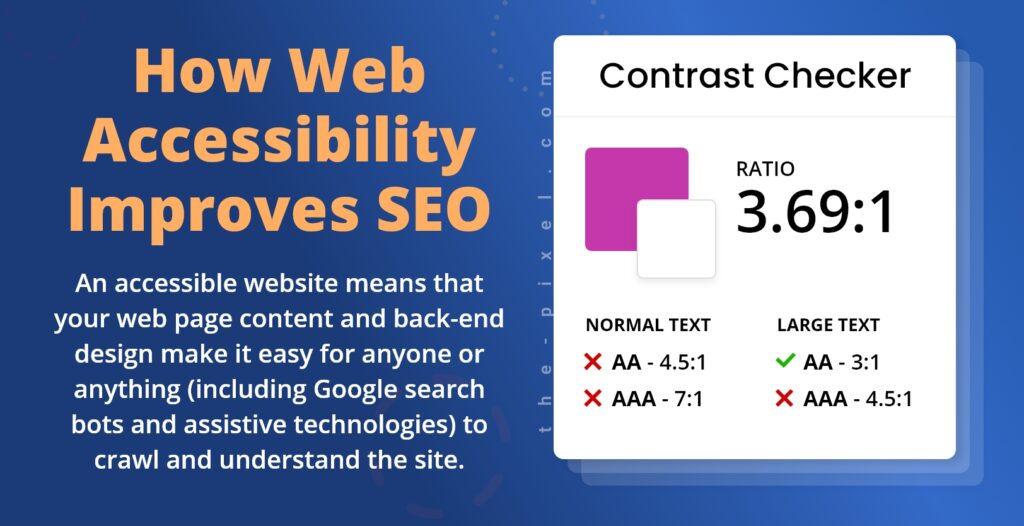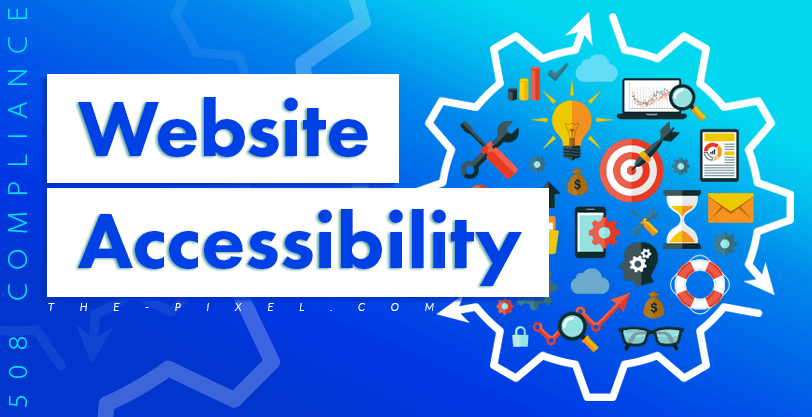Making Your Website ADA-Compliant
Making Your Website ADA-Compliant
ADA Compliant websites and why you need one
Just like there is a need for physical buildings to be ADA-compliant and include accessible entryways and other accommodations, the same needs to be done for websites to make it possible for people with disabilities to more easily navigate a business’ website. Business owners who do not comply with ADA standards regarding websites can expect to come into trouble as lawsuits are on the rise with various organizations that will come after you to force compliance.
What is ADA Compliance for websites?
Before you can comply with ADA standards for websites, it’s crucial to understand exactly what it is. The Americans with Disabilities Act (ADA) was created to ensure that people with disabilities are not discriminated against. The far-reaching law covers areas such as state and local government, public and private spaces, employment, building codes, transportation and telecommunication. Your websites 508 compliance also referred to as website accessibility.
Thanks to the ADA, important changes such as the availability of handicapped parking spaces, service counter height requirements and wheelchair ramps are now commonplace.
In our society’s ever-increasing dependence on technology, that scope has widened to include website compliance. Now, businesses must ensure that their websites are easily accessible for people with disabilities and that these individuals face no barriers when trying to navigate a website. To help business owners achieve ADA compliance for their websites, they created Web Content Accessibility Guidelines (WCAG) for them to follow.

WCAG
The guidelines of website accessibility standards (know as 508 compliance) have been put in place to ensure that websites are perceivable, operable, understandable and robust. There are various “success criteria” that you can use to test the usability of your website based on the guidelines in these categories. For a complete list of these guidelines, check out the W3C recommendations. Here is some basic information about each category:
a) Perceivable Category
This section helps content creators ensure everyone can use their media. It gives recommendations for presenting content in ways that make it easier for people with disabilities to use them, such as including captions with videos while still maintaining the meaning and coherence of the content. This section also includes suggestions for using contrast in images and text to ensure their readability.
b) Operable Category
This category focuses on ensuring a website functions in a way that does not create problems for users. Some topics covered in this category include:
- Having a website that can be operated with a keyboard.
- Ensuring moving sections can be paused if a user needs more time with it.
- Ensuring pages and sections are clearly labeled, so users will know where they are on the site.
c) Understandable Category
This category ensures that web pages feature logical functionality and language. This section includes the following mandates:
- The language of the page should be programmatically identifiable.
- There is consistent navigation throughout the website.
- There are ample instructions for any areas that require user input.
d) Robust Category
This category ensures that a website’s code is following current web standards and is strong enough to help assistive readers understand the code.
How to achieve ADA Compliance for your website
Having a website that is not ADA compliant can easily get you in trouble and possibly sued. Thankfully, there are ways you can ensure that your website is compliant. Here are some tips to get you going in the right direction:
1. Evaluate your current site
Take a look at your current site to see where you’re compliant and where you need to do some work. That way, you can formulate the best plan of action as you move forward. Scan your website and download our free SEO audit report.
2. Choose appropriate graphics
Graphics are a key component of an ADA-compliant website. Graphics shouldn’t flash more than three times per second, so they don’t cause seizures. They should also include a caption that can be read aloud to the visually impaired.
3. Include alt-text and use readable fonts
Provide alt-text for all images in your code so your images can be described audibly. Always use fonts that are easy to read like Georgia, Open Sans or Quicksand. Also, avoid using a light-colored font on a light background, so the text isn’t hard to read.
4. Make website features logical
For your website to be ADA compliant, it must be understandable to a wide audience. It should be predictable and have helpful labels over blocks of content. The idea is to minimize the potential for user error.

5. Code with standard HTML tags
Ensure that your code is readable by an assistive reader. Also, always provide documents in a text-based format.
6. Remain up to date on compliance changes
ADA needs are ongoing and ever-changing. To ensure you are always compliant with ADA standards, make it your business to know what the changes are and that you make any necessary changes as soon as they are needed.
7. Find an ADA Agency
Work with an ad agency that understands ADA compliance. Agencies that have worked in this area before and are well-versed with the law can help you weed through the technical language and make sure you have a site that is easily used by everyone and anyone. Having an ADA-compliant website is crucial for ensuring that your website is accessible for people regardless of what their special needs may be. Plus, It will help to ensure that you do not get sued down the line.
Hire ThePixel to build your next website!
Since our founding in 2008, we’ve created and launched many types of business websites. Over the last decade and we’ve learned a thing or two! That’s why we’re masters of our craft, let us help you build the website of your dreams – one that generates traffic, leads and conversions.
Are you ready to start? If yes, contact ThePixel and one of our representatives will guide you through the website phases and how the process works either by a Zoom Meeting or phone.


